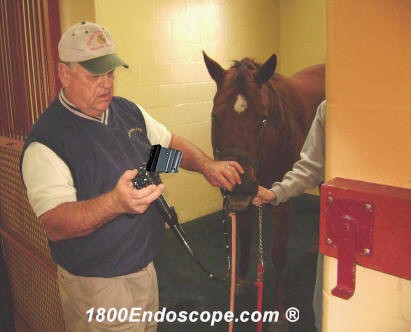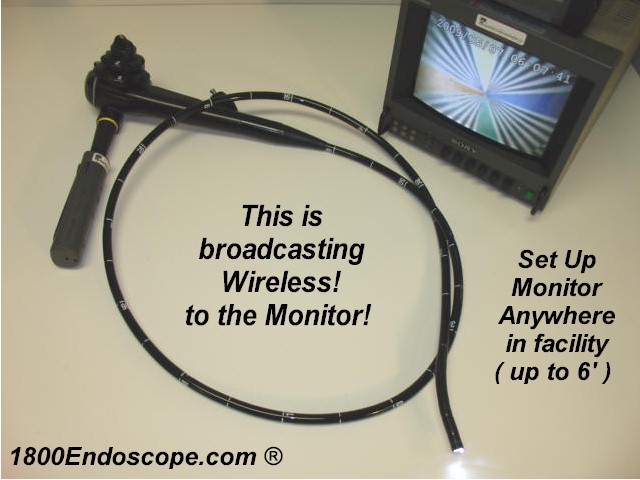AFFORDABLE VETERINARY
EQUINE PORTABLE VIDEO ENDOSCOPE!
REVOLUTIONARY!
AFFORDABLE!
*1800PVS
PATENT PENDING
NOW VIDEO ENDOSCOPY AFFORDABLE FOR EVERYONE!
Introducing our new
1800PVS9160 9mm x 160cm!
2 YEAR WARRANTY!
REPAIRED AT NO CHARGE FOR TWO YEARS!
shipping not included
Veterinary Video Scope!
NO MORE NEED FOR BIG HEAVY EXPENSIVE VIDEO ENDOSCOPY SYSTEMS!
NO MORE BLACK DOTS!!
LIGHT AND VIDEO SPECS:
LED lamp and micro camera technology.It has an auto focus function.The Insertion tube is 50" in length, 8.5 mm or 12.5mm ( 3M ) outer diameter OD.The resolution is 70,000 pixels . Screen display controlled through the Scope grip held Monitor, record pictures or live video and audio of procedure!
CMOS IMAGE SENSOR!
RESOLUTION : 320 X 240 ON 3.5" TFT LCD MONITOR
640 X 480! 3.5" LCD MONITOR! with adjustable arm
30 FPS FRAME RATE!
42DB S/N RATIO!
COOL BRIGHT WHITE LED LAMPS
AUTO EXPOSURE!
FIELD OF VIEW 110 d
8 - 100mm DEPTH OF FIELD!
RECHARGEABLE LI-POLYMER BATTERY!
POWER: 3.7VDC! ( 110v - 220 v )
RECORD ON 512MB SD CARD ( 2GB MAX )
COMPRESSION: MPEG4!
VIDEO OUT: NTSC / PAL!
JPEG ( 640X480 ) STILL IMAGE STORAGE!
ASF 320X240 VIDEO STORAGE!
Record Pictures or live Video!

Completely Portable!
WIRELESS!
Endoscope System with cables and wires etc. Freeze Frame controls!
LED lamps and micro camera technology.It has an auto focus function.The Insertion tube is 150cm in length, 8.9mm outer diameter OD.The resolution is 70,000 pixels Focus knob on the handgrip for lighting calibration. Screen display controlled through Handgrip function buttons.
Take photos and/or Videos direct to SD RAM card!Standard Features:
applications!
Use your TV or PC to View Procedures and Store Images! No need for separate storage device!
**SEMI - SUBMERSIBLE SIMPLY REMOVE
MONITOR!
UP / DOWN / LEFT / RIGHT
KNOBS 120 degrees each way
Air Water / Biopsy Suction Port
Includes :
1) 1800PVS PortableVideoScope
+ 3.5" LCD Monitor / portable media player1) Case
1) Video / Power Recharge Units
1) Mini Video Out to RCA cable
1 ) 512mb SD Card
1) USB Video Cable to view images / video on a Windows XP PC2 ) Forceps + Cleaning Brush
Can be washed with caution, not fully submersible
220v conversion plugs for Europe +

ONLY
Click on Price to order
1800PVS9160: $5999 9mm x 160cm 2.0mm channel
IS NOW HERE!
1800PVS3M 9.8mm x 3 meters 2.0mm ch $6999
Call us for more info! 1-800-363-6726 or ++ 941 792 7138